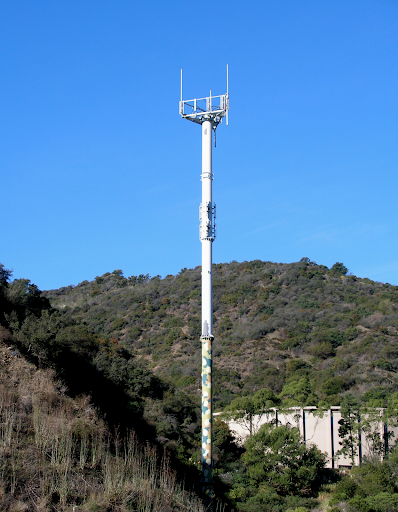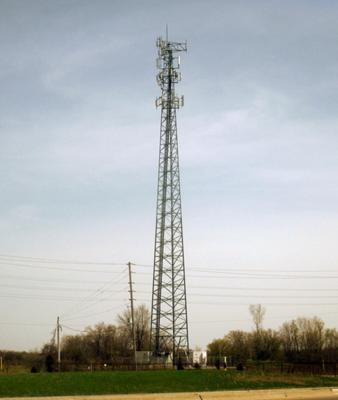
Everything You Need to Know About Cell Towers
Introduction
Have you ever noticed tall towers with apparatus on top while driving down a highway or driving through your city. Did you ever glance at the structure and ask yourself, “what the heck is that thing even for?” These structures serve a very important purpose, they maintain your cellular network. The structures you are seeing are known as “cell sites” and by extension “cell towers”. Even though these terms are often used interchangeably, cell towers and cell sites are not the same. A cell site is composed of the antenna and ground equipment and other equipment such as transmitters, receivers, GPS, backup power sources, base transceiver stations; whereas the cell tower is the physical structure on which the equipment sits.
Cellular towers are an integral part of establishing and maintaining a wireless network. Such wireless networks provide voice and data services to cell phone users within a certain distance from cell towers. The cellular towers are prolific in urban areas. While the density of these cellular towers may not be as high as in rural areas as they are in urban areas, they are still vital in their communicative purpose.
These towers vary in size, shape, and location. Below we’ll discuss some of the different types of cell towers, where they are usually located, What they do, and what type of technology they support.
Different Types of Towers
There are several different types of structures for cell towers. Each cell tower serves the same purpose, but the different structures each have characteristics that accommodate the surrounding land. The four types of towers that are commonplace are as follows: monopole towers, lattice towers, guyed towers, and camouflaged towers.
A monopole tower, in figure 1 below, is a smooth pole with antennas and other equipment mounted directly on it. A monopole tower is often found in suburban cell sites. Next are lattice towers in figure 2 below. They are self supported, triangular, towers that are anywhere from 200 to 400 feet tall. Then we have guyed towers in figure 4 below. These are a type of lattice tower that are on average taller and depend on guyed cables for added stability. Lastly, but perhaps most interestingly, is the camouflaged or stealth tower. One example is figure 3 below. This tower is specifically outfitted with different materials to make it blend into the surrounding environment. The camouflage tower is ideal for communities that wish to preserve the natural beauty of their communities.
Parts of a Tower
There are ten main components to cell towers. The first is the whip antenna. This part of the structure is located usually at the top of the tower. It is a monopole type antenna that is mounted vertically. The next component of the structure is the Antenna array. Typically, these are three sided platform-like structures on which equipment is placed. On this structure the number of antennas vary depending on the individual needs of the surrounding communities.
Next, we have the microwave dish. This is an integral component. It is a type of antenna that is used for point to point radio, television, and data communication. The microwave dish is also used as a backhaul for wireless carriers. Another important component is the generator. It is used for backup in the case of power outages. At the base of the tower is the base transmitter station. This is the main communication point for wireless mobile client devices. This is the key part of the cell tower that allows users to make and receive calls. Another facet of this process is the panel/antenna. These are the main pieces of equipment that transmits a signal from the tower to a person’s cell phone.
The last few pieces of equipment are essential for proving the cell tower with the necessary infrastructure to be able to function. First are the portholes. These are holes cut into the tower to allow cables to pass through the tower structure. Throughout the tower there is coaxial cabling (fiber cables). These are data transmission lines.
How They Work
Let’s start with the basics. The call will take place over two channels. The first channel is the TCH or traffic channel. This is where voice communication happens. The second channel is the SDDCH or the stand alone dedicated control channel. This is where signaling and messages take place. Keep in mind, “channel” here refers to the frequency airwaves used for communication.
What happens when you make a call? First, that signal is sent to the nearest broadcast station from your cell phone. Then the base station antenna will assign the signal to an available radio frequency channel. After, the radio frequency waves will then transfer the voice information to the base station. The voice signals are then sent to a switching center. The switching center then transfers the call to the destination. The signals from the call are relayed back and forth throughout the call. This is all to say, when you make a call, your phone will find the nearest cell tower and send a signal to that base station receiver. The call is then routed through the mobile switching center. We can where the call signal is then routed to the next base station where the other mobile device is located.
This is a continuous process similar to two people speaking to each other face to face. Person one says something to person two, this is like your phone sending the signal to the nearest cell tower and base station transmitter. Person two does not immediately reply because their brain has to process the communication. The brain is like the mobile switching center. Once the brain understands the signal or communication being received, it then sends out a reply or signal and thus person two responds. This is like the second base station receiver and cell tower responding and reciprocating the signal from the first communication.
How They Are Built
Tower construction is a lengthy and complex process that has a lot of multifaceted components. Usually before construction can even begin, there are numerous factors to consider. First, a company has to check the FCC’s (Federal Communication Commission) rules regarding environmental regulations. This includes careful consideration of the endangered species in that region, historical and tribal examinations, and aviation safety. After the environmental factors have been considered, a company has to meet the pre construction requirements. Among these requirements is to notify the FAA, this is usually for towers that are 200 feet or taller. Then an applicant has to register the antenna structure. Afterwards, the applicant must adhere to local and state zoning requirements.
While the aforementioned process is simplified, the process of constructing cell towers from site acquisition to completed construction is a complex and necessary process. Building cell towers are an integral component of making sure your wireless network works for you.
Sources:
[1] How the advanced cell towers work? – Telecom Family[2] What Is a Cell Tower and How Does a Cell Tower Work? | Millman National
Land Services (millmanland.com)[3] What Is a Cell Tower and How Does a Cell Tower Work? | Millman National
Land Services (millmanland.com)[4] Cell Towers: Everything You Ever Wanted to Know (wilsonamplifiers.com)[5]Cell site – Wikipedia[6]How do Cell Towers Work? | Tower Advantage, Cell Tower Lease Experts[7] Tower and Antenna Siting | Federal Communications Commission (fcc.gov)[8] Types of Cell Sites – Steel In The Air[9] Cell Phone Towers (cancer.org)[10] Why Invest In A Cell Tower REIT? | Seeking Alpha









